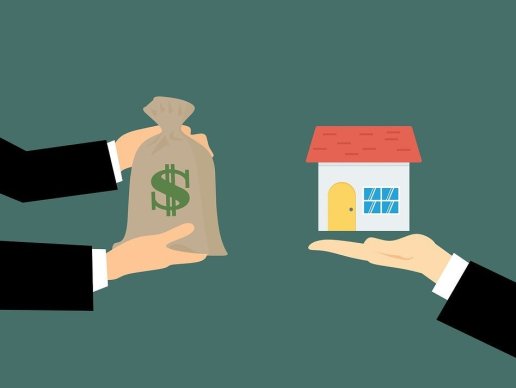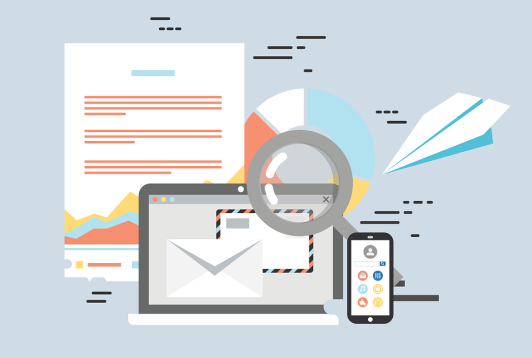You are viewing our site as an Agent, Switch Your View:
Agent | Broker Reset Filters to Default Back to ListYour Complete Real Estate Prospecting Guide
December 02 2019
Figuring out how to get new clients can be daunting for many real estate agents, even those with years of experience under their belt. As the industry, local markets, and technology all change, the best practices for how to prospect are ever-evolving as well.
Here's everything you need to know about prospecting for buyer and seller leads, so you can keep growing your business. This is ideal for the slower months, so you can "farm" for prospects and then have a wealth of clients in preparation for the busy season.
Determining how to find buyers in your area takes time—but it's worth it.
What is prospecting?
 Prospecting includes all the activities you do to actively find a prospect (someone who is looking to buy or sell) and convert them into a client.
Prospecting includes all the activities you do to actively find a prospect (someone who is looking to buy or sell) and convert them into a client.
It's often conflated with marketing generally, but there are important differences. Think of marketing as what you do to see if any buyers or sellers "bite" — you advertise your business to many, and you see if anyone contacts you.
You run ads online, you set up a Google business profile, you have a website with your contact info — then you wait for a call or text or email.
Prospecting, however, counts on you initiating the outreach, not the buyer or seller.
You identify individuals who could be good prospects (we'll talk about how to do that below), and then you start the conversation. Sometimes, you might identify a person as a prospect who isn't actively looking to buy or sell, but could be convinced after speaking with you.
Think of prospecting like outbound marketing, whereas other tactics like running digital ads are inbound marketing.
Why do real estate agents farm or prospect?
 Real estate agents rely on new clients to keep their business going, and those clients don't just fall into their laps. While it'd be nice to have tons of clients constantly reaching out for help, farming or prospecting is actually a huge slice of how agents spend time.
Real estate agents rely on new clients to keep their business going, and those clients don't just fall into their laps. While it'd be nice to have tons of clients constantly reaching out for help, farming or prospecting is actually a huge slice of how agents spend time.
That means agents — aside from doing the general marketing that puts their brand out there — have to target specific areas, neighborhoods, and even homes to find that next client.
An agent could convince someone to sell a house that isn't even on the market, with the right circumstances and information at the ready.
All in all, prospecting is an important way to find buyer and seller leads without waiting for them to find you.
How do I prospect or farm for clients?
There's no one "best" way to prospect. It all depends on your market, your demographic and your personal style.
Set aside a little bit of time each day or week to invest in prospecting. If you're starting your prospecting plan from scratch, it may call for a big upfront time investment. After that, plan on about an hour a day of maintenance work – more when you have the time.
Hyper-targeted postcards, flyers, emails, phone calls, door-to-door conversations and social media interactions all fall under the prospecting umbrella. The most successful agents use a mix of offline and online methods.
Offline contact gives you the chance to build the kinds of personalized relationships that make leads remember you. Online, you can more easily showcase the stellar real estate photography that impresses prospects.
Each prospecting strategy comes with its own to-do list. Here's our master checklist of tactics to consider as you tackle the most popular real estate prospecting approaches:
1. Sending Postcards and Flyers
 Sending postcards and flyers are a budget-friendly way to get a large amount of people familiar with your business. Creating a visually compelling postcard/flyer can set you apart from typical junk mail and get those prospective clients interested in your business.
Sending postcards and flyers are a budget-friendly way to get a large amount of people familiar with your business. Creating a visually compelling postcard/flyer can set you apart from typical junk mail and get those prospective clients interested in your business.
-
Make it personal. Unlike the more generic marketing postcards you might use to blast a whole geographic area, your prospecting postcards should feel personalized. You might send out anniversary postcards to clients who have been in their homes a year – and remind them to mention your name to their friends.
-
Highlight recent sales. You might send a handwritten note to the people living around a property you just sold, letting them know that you're an expert on the area. Chances are, some of the prospects had an eye on the home you just sold, and they'll be interested in the agent who sold it.
-
Include testimonials from previous clients. Reviews are one of the best ways you can build trust among your prospects. When possible, target locally. Recognizing a neighbor's name might be all the validation a lead needs to choose you as their agent.
-
Encourage prospects to search for you on Google and see your full list of sparkling reviews (and make sure you have a well-managed Google business profile to impress them).
-
Make the postcard/flyer colorful so it grabs the attention of a prospect sifting through junk mail.
-
Add something of value, like 6 tips for boosting curb appeal, or even a seasonal cocktail or appetizer recipe. This gives your prospect another reason to stick that postcard on the refrigerator or save it, and it might also show some personality.
Think carefully about where you post any flyers, both to identify strategic locations where they'll be effective and to avoid breaking any local rules. If you want to post something in a coffee shop or grocery store, make sure you have permission — otherwise you're likely wasting time and it'll be swiftly taken down.
2. Sending Emails
 Sending an email to a potential client is an easy icebreaker that allows you to be more direct, personal, and friendly. You can create a lasting connection by writing a personalized email that connects you with prospects.
Sending an email to a potential client is an easy icebreaker that allows you to be more direct, personal, and friendly. You can create a lasting connection by writing a personalized email that connects you with prospects.
-
Make the notes feel individualized. An email marketing program is a key piece of any real estate marketing plan, but more personalized emails are where the real prospecting happens.
-
Mention the person who gave you their name to make that connection quickly, if you are reaching out to a referral. If the referring client gave any information about the prospect — e.g., that they're looking to relocate for their job — make sure to personalize the email with that info, too. It's also a good opportunity to explain how you can help in that specific situation.
-
Include a specific call to action. An email gives you the chance to invite leads to share more info with you and/or to engage further with you online. You might invite them to upcoming open houses in their area or include links for them to follow you on social media. Don't forget to add your phone number, too — a prospect might be more interested in texting or calling than emailing.
3. Knocking on Doors
 Going door-to-door may seem intimidating at first, but this method can separate you from the rest. There is nothing better than having a face-to-face interaction and connecting with potential clients by having a genuine conversation about their real estate needs.
Going door-to-door may seem intimidating at first, but this method can separate you from the rest. There is nothing better than having a face-to-face interaction and connecting with potential clients by having a genuine conversation about their real estate needs.
-
Always carry your card or something else you can leave behind. Meeting prospects through good old-fashioned conversation isn't too common these days, so this is a chance for you to differentiate yourself. It will also make sure your name and face stay with the homeowner longer.
-
Use a simple door knocking real estate script. Worried it'll be awkward? Well, it might be, but chances are you'll have some warm and friendly encounters, too. Memorizing a simple script will help you build your confidence. Check out some sample door knocking real estate scripts here.
-
Ask for the decision-maker. It won't help you to give your whole spiel to a kid or a renter. Make sure you introduce yourself as a real estate agent and ask whether the person you're talking with is the homeowner.
-
Do your research, and start with a personal connection. If you know something about the neighborhood, the house itself, or the people next door, your introduction gets a whole lot easier. Ask around and lead with something you know or something you've done.
-
Ask your clients to "snap" homes with Homesnap. If you're connected in the app, their "snaps" of homes will be shared directly with you, so you can easily dig into info on homes they love (even if they aren't on the market). It's a great conversation starter: "My client was looking for houses around here and absolutely loves your home!" It puts better context around why you're reaching out.
-
Be warm and real – even at the expense of being polished. Sure, people want to work with an expert. But even more than that, they want to work with someone they trust. Make sure to prioritize the personal and human elements of your conversation.
4. Making Phone Calls
 Calling prospects is a cost effective way to reach out and discuss what a potential buyer/seller is looking for. Phone calls allow agents to get personal with prospects and have a natural conversation about the local real estate market at a convenient time for everyone.
Calling prospects is a cost effective way to reach out and discuss what a potential buyer/seller is looking for. Phone calls allow agents to get personal with prospects and have a natural conversation about the local real estate market at a convenient time for everyone.
-
Choose some simple scripts. Cold calling can feel scary, but buyer lead scripts can help. Check out these cold calling scripts for different situations to help you jump into conversations with potential clients.
-
Do your research. This depends a lot on why you're calling. Keep your relevant notes in front of you, just in case you forget the details on the spot. If you're calling a referral from a happy client, make sure to include that when you call to establish that instant connection.
-
Practice a range of responses to what they might say. If you rehearse a few different outcomes for the call, you'll feel less caught off guard even if things go in an unexpected direction.
-
Be genuine. A prospect wants to get the feeling that you're an agent who will take care of them, so making a personal connection is more important than trying to sound impressive or bragging about recent sales.
-
End the call with a specific invitation – to an upcoming open house, for example, or with a plan to meet to discuss your services further.
What tools do you need for prospecting?
-
A healthy online presence. First, make sure you have a digital marketing presence in place to support your prospecting outreach. You can bet that even if you charm a lead in person, their next move is going to be to look up your Google reviews.
-
Organized network database. The most valuable prospecting asset you have is your network. Think of all the contacts in your telephone. All your Facebook friends. All the friends, family and acquaintances living in your area. All your past and current clients. These are all people who you could contact to see if they need a real estate agent, or know someone who is getting ready to buy or sell.
Ask yourself: Do I have all of their contact information gathered in one place? Are they all aware that I'm a real estate agent who is active and respected in the area? Do we touch base regularly, so I stay top of mind for them?
 Building out your database is the upfront investment that will pay off big time. Gather the contact information into one place – like a spreadsheet you can pull from any time.
Building out your database is the upfront investment that will pay off big time. Gather the contact information into one place – like a spreadsheet you can pull from any time.
-
Professional photography and design. Make sure you have beautiful real estate photography. No matter which prospecting pathways you take, you'll want high-quality visuals. Postcard mailers, flyers, sample listing presentations… they all need to impress and illustrate that you are a true professional with expert resources. Check out our real estate photography tips if you're not sure whether you're hitting the mark.
-
Market research tools. Develop your expertise on your neighborhoods. Are there school districts that are highly sought-after? Specific signals that a resident might be getting ready to move? Streets that buyers are swooning over?
If you've been at this for a while, you probably already know your local market like the back of your hand. Make a list of the details and info that a layperson might not know about the area. This is some of the value content you'll be able to offer in conversations to distinguish yourself as an expert.
Ready to pick the strategies you want to try?
Don't be limited by discomfort. Sure, you might not love picking up the phone and calling a stranger, but once you've done it a handful of times, your jitters will wear off.
To view the original article, visit the Homesnap blog.









